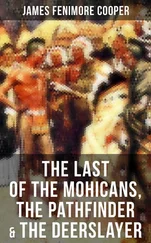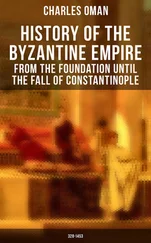Lars Brownworth - Lost to the West - The Forgotten Byzantine Empire That Rescued Western Civilization
Здесь есть возможность читать онлайн «Lars Brownworth - Lost to the West - The Forgotten Byzantine Empire That Rescued Western Civilization» весь текст электронной книги совершенно бесплатно (целиком полную версию без сокращений). В некоторых случаях можно слушать аудио, скачать через торрент в формате fb2 и присутствует краткое содержание. Год выпуска: 2010, ISBN: 2010, Издательство: Random House, Inc., Жанр: Старинная литература, на английском языке. Описание произведения, (предисловие) а так же отзывы посетителей доступны на портале библиотеки ЛибКат.
- Название:Lost to the West: The Forgotten Byzantine Empire That Rescued Western Civilization
- Автор:
- Издательство:Random House, Inc.
- Жанр:
- Год:2010
- ISBN:9780307407962
- Рейтинг книги:3 / 5. Голосов: 1
-
Избранное:Добавить в избранное
- Отзывы:
-
Ваша оценка:
- 60
- 1
- 2
- 3
- 4
- 5
Lost to the West: The Forgotten Byzantine Empire That Rescued Western Civilization: краткое содержание, описание и аннотация
Предлагаем к чтению аннотацию, описание, краткое содержание или предисловие (зависит от того, что написал сам автор книги «Lost to the West: The Forgotten Byzantine Empire That Rescued Western Civilization»). Если вы не нашли необходимую информацию о книге — напишите в комментариях, мы постараемся отыскать её.
Lost to the West: The Forgotten Byzantine Empire That Rescued Western Civilization — читать онлайн бесплатно полную книгу (весь текст) целиком
Ниже представлен текст книги, разбитый по страницам. Система сохранения места последней прочитанной страницы, позволяет с удобством читать онлайн бесплатно книгу «Lost to the West: The Forgotten Byzantine Empire That Rescued Western Civilization», без необходимости каждый раз заново искать на чём Вы остановились. Поставьте закладку, и сможете в любой момент перейти на страницу, на которой закончили чтение.
Интервал:
Закладка:
Oddly enough, despite the tremendous impact he would have on Christendom, Constantine never really made a convincing Christian. He certainly never really understood his adopted religion, and it seemed at first as if he had merely admitted Christ into the pantheon of Roman gods. The images of Sol Invictus and the war god Mars Convervator continued to appear on his coins for years, and he never gave up his title of Ponttfex Maximus —chief priest of the old pagan religion. Gallons of scholarly ink have been spilled debating whether his conversion was genuine, but such speculation is beside the point. The genius of Constantine was that he saw Christianity not as the threat that Diocletian did, but rather as a means to unify, and the result of his vision that fateful day—whether genuine conversion or political opportunism—was a great sea change for the empire and the church. Christianity’s great persecution was over. From now on, the once-oppressed faith would be in the ascendancy.
The pagan Senate didn’t quite know what to make of their new conqueror. He was clearly a monotheist, but which kind was not exactly certain, so, like politicians of any era, they decided to play it safe and erect him a victory arch complete with an inscription vaguely referring to “divinity” aiding him in his just war. Perfectly pleased with this ambiguity, Constantine issued an edict of toleration in 313, legalizing Christianity, but stopping short of making it the exclusive religion of the empire. Though Christianity was an easy fit for him—his mother, Helena, was a Christian, and his own worship of the sun reserved Sunday as a holy day—he had no interest in being a missionary. The majority of his subjects were still pagan, and the last thing he wanted to do was to alienate them by forcing a strange new religion on them. Instead, he wanted to use Christianity to support his regime the way that Diocletian had used paganism. The main goal was to unite the empire under his benevolent leadership, and he wasn’t about to jeopardize that for the sake of religious zeal.
There was, however, an even more compelling reason to portray himself as a model of religious toleration. While he had been busy conquering Rome, the emperor Licinius had emerged victorious in the East, and was now nervously watching his predatory neighbor. He had good reason to be afraid. Not only were Licinius’s eastern territories richer and more populous than their western counterparts, but Christianity had been born there, providing a natural base of support for the man who had so famously converted. For eleven years, there was a tenuous peace, but Licinius was terrified of the ravenous appetite of Constantine, and his paranoia betrayed him. Accusing the Christians in his territory of acting as a fifth column for his rival, Licinius tried to suppress the religion, executing bishops, burning churches, and restarting Diocletian’s persecutions.
The foolish eastern emperor had played right into his enemy’s hands. Constantine had been hoping for just such an opportunity, and he pounced immediately. Sweeping into the East, he pushed Licinius’s larger army over the Hellespont, destroying the trapped navy that the scrambling emperor left behind. After weeks of further maneuvering, the two armies met on September 18, 324, just across the Bosporus from the Greek colony of Byzantium, and in the shadow of that ancient city Constantine won a complete and shattering victory.
At fifty-two years of age, he was now the sole ruler of the Roman Empire, and to commemorate his success he gave himself a new title. After his victory at the Milvian Bridge, he had added “the Greatest” to his impressive string of names, and now he included “the Victor” as well. Humility had clearly never been one of the emperor’s virtues, but Constantine was a master of propaganda and never missed an opportunity to promote himself. These instincts had served him well, allowing him to mask his thirst for power behind a disarming veneer of tolerance and kill off his rivals while retaining the guise of the people’s champion. He had come to the rescue of his Christian subjects without persecuting his pagan ones, always maintaining a careful neutrality. Now that there were no more pagan enemies to fight, however, he could reveal a more open patronage of Christianity. His mother, Helena, was sent on a pilgrimage to the Holy Land—the first such trip in history—founding hostels and hospitals along the way to assist the generations to follow. In Bethlehem, she built the Church of the Nativity over the site of Christ’s birth, and at Golgotha, in Jerusalem, she miraculously discovered the True Cross upon which he had been crucified. Leveling the temple of Venus that had been built by the emperor Hadrian on the site, she raised the Church of the Holy Sepulchre over the empty tomb.
While his mother was busy becoming the first pilgrim, Constantine carried out several reforms that would have far-reaching consequences. The confusion of civil war had disrupted markets and farms as the working classes fled for the comparative safety of the cities, and the emperor tried to stabilize the situation by forcing the peasant farmers to stay on their land. Going even further, he locked members of guilds—from bakers to hog merchants—in their occupations, forcing sons to follow their fathers. In the East, which had always been more stable and prosperous, this legislation was rarely enforced and had little effect, but in the chaotic, turbulent West, it was heavily pushed, and the result was the feudal system, which would take deep root and not be overthrown for a thousand years.
In the short term, however, a comforting stability returned to the shaken empire. Fields were harvested, markets resumed their operations, and commerce began to flourish.
Constantine was interested in more than just the material well-being of his subjects, and as the finances of his empire improved, he began to cautiously nurture his new faith. Pagan sacrifices were banned, sacred prostitution and ritual orgies were outlawed, and temple treasuries were confiscated to build churches. Crucifixion was abolished, and even gladiatorial contests were suppressed in favor of the less-violent chariot races. He had united the empire under his sole rule, and now Christianity would be united under him as well.
Just as the empire came together politically, however, a new and deadly heresy threatened to permanently rip it apart. It started in Egypt when a young priest named Arius started teaching that Christ was not fully divine and was therefore inferior to God the Father. Such a teaching struck at the heart of the Christian faith, denying its main tenet, which held that Christ was the incarnate word of God, but Arius was a brilliant speaker, and people began to flock to hear him speak. The church was caught completely off guard and threatened to splinter into fragments. Sporadically persecuted and until recently driven underground, the church was decentralized, a loose confederation of local congregations scattered throughout the empire. As the successor of Saint Peter, the bishop of Rome was given a special respect, but he had no practical control, and as the New Testament writings of Paul attest, the different churches had a strong tendency to go in their own directions. With no real hierarchy and little organization, the church had no means of definitively responding to Arius’s teachings, and the controversy soon raged out of control.
It’s typical of Constantine’s soldier mentality that he thought he could simply order the warring factions to stop fighting. Completely misjudging the depth of feeling involved, he wrote to the bishops in Egypt with a painful naïveté, telling them that their differences were “insignificant” and asking them to just work them out and live in harmony. When it became apparent that they could do no such thing, he decided on a radical solution. The problem with Christianity, he thought, was that it suffered from a distinct lack of leadership. The bishops were like the old senators of Republican Rome—always arguing but never coming to a consensus unless threatened. Thankfully, Augustus had solved that problem for the empire, allowing the senators to continue to talk but dominating them by his presence when things needed to get done. Now it was Constantine’s job to rescue the church. Under his watchful gaze, the church would speak with one voice, and he would make sure the world listened.
Читать дальшеИнтервал:
Закладка:
Похожие книги на «Lost to the West: The Forgotten Byzantine Empire That Rescued Western Civilization»
Представляем Вашему вниманию похожие книги на «Lost to the West: The Forgotten Byzantine Empire That Rescued Western Civilization» списком для выбора. Мы отобрали схожую по названию и смыслу литературу в надежде предоставить читателям больше вариантов отыскать новые, интересные, ещё непрочитанные произведения.
Обсуждение, отзывы о книге «Lost to the West: The Forgotten Byzantine Empire That Rescued Western Civilization» и просто собственные мнения читателей. Оставьте ваши комментарии, напишите, что Вы думаете о произведении, его смысле или главных героях. Укажите что конкретно понравилось, а что нет, и почему Вы так считаете.












